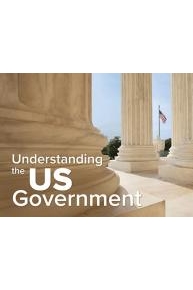
Understanding the Quantum World
Where to Watch Understanding the Quantum World
Watch Understanding the Quantum World Season 1 Episode 24 Now
Watch Understanding the Quantum World Season 1 Episode 23 Now
Watch Understanding the Quantum World Season 1 Episode 22 Now
Watch Understanding the Quantum World Season 1 Episode 21 Now
Watch Understanding the Quantum World Season 1 Episode 20 Now
Watch Understanding the Quantum World Season 1 Episode 19 Now
Watch Understanding the Quantum World Season 1 Episode 18 Now
Watch Understanding the Quantum World Season 1 Episode 17 Now
Watch Understanding the Quantum World Season 1 Episode 16 Now
Watch Understanding the Quantum World Season 1 Episode 15 Now
Watch Understanding the Quantum World Season 1 Episode 14 Now
Watch Understanding the Quantum World Season 1 Episode 13 Now
Watch Understanding the Quantum World Season 1 Episode 12 Now
Watch Understanding the Quantum World Season 1 Episode 11 Now
Watch Understanding the Quantum World Season 1 Episode 10 Now
Watch Understanding the Quantum World Season 1 Episode 9 Now
Watch Understanding the Quantum World Season 1 Episode 8 Now
Watch Understanding the Quantum World Season 1 Episode 7 Now
Watch Understanding the Quantum World Season 1 Episode 6 Now
Watch Understanding the Quantum World Season 1 Episode 5 Now
Watch Understanding the Quantum World Season 1 Episode 4 Now
Watch Understanding the Quantum World Season 1 Episode 3 Now
Watch Understanding the Quantum World Season 1 Episode 2 Now
Watch Understanding the Quantum World Season 1 Episode 1 Now

Understanding the Quantum World is a captivating exploration of one of the most perplexing and revolutionary fields in modern physics. Presented by Dr. Lincoln Carr, a distinguished physicist and educator, this course from The Great Courses Signature Collection delves into the fundamental principles of quantum mechanics and its profound implications for our understanding of the universe.
Throughout the course, Dr. Carr takes viewers on a fascinating journey through the quantum world, unraveling complex concepts and theories in an accessible and engaging manner. From the famous double-slit experiment to the mind-bending phenomenon of quantum entanglement, each lecture builds upon the previous one to paint a comprehensive picture of this enigmatic realm of science.
One of the key themes explored in Understanding the Quantum World is the dual nature of particles, which can behave as both waves and particles depending on the experimental setup. This duality lies at the heart of quantum mechanics and challenges our classical intuition about the nature of reality. Through thought-provoking examples and thought experiments, Dr. Carr guides viewers through the implications of this dual nature, shedding light on the counterintuitive nature of quantum phenomena.
Another highlight of the course is the exploration of quantum superposition and measurement, two fundamental concepts that underpin the probabilistic nature of quantum mechanics. Viewers will learn how particles can exist in multiple states simultaneously, known as superposition, and how the act of measurement collapses this superposition into a single observable state. This concept lies at the heart of quantum computing and is essential for understanding the behavior of quantum systems.
Furthermore, Understanding the Quantum World delves into the fascinating phenomenon of quantum entanglement, where particles become intrinsically linked regardless of the distance between them. This concept, famously described by Albert Einstein as "spooky action at a distance," defies our classical understanding of locality and has profound implications for the nature of reality. Dr. Carr explores the experimental evidence for quantum entanglement and discusses its potential applications in quantum technologies.
The course also addresses the challenges and open questions in quantum mechanics, including the interpretation of the wave function, the role of measurement in shaping reality, and the search for a unified theory of quantum gravity. By examining these complex issues, viewers will gain a deeper appreciation for the rich tapestry of ideas that make up the quantum world.
Overall, Understanding the Quantum World is a thought-provoking and intellectually stimulating journey into the mysterious realm of quantum mechanics. Whether you are a novice or a seasoned physicist, this course offers a comprehensive overview of the fundamental concepts and theories that define the quantum world. By the end of the course, viewers will have a newfound understanding of the profound implications of quantum mechanics and its implications for our understanding of the universe.
Understanding the Quantum World is a series categorized as a new series. Spanning 1 seasons with a total of 24 episodes, the show debuted on 2019. The series has earned a no reviews from both critics and viewers. The IMDb score stands at undefined.
How to Watch Understanding the Quantum World
How can I watch Understanding the Quantum World online? Understanding the Quantum World is available on The Great Courses Signature Collection with seasons and full episodes. You can also watch Understanding the Quantum World on demand at Amazon Prime, Apple TV Channels, Amazon online.






























